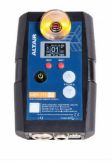Quiz time! What PA System jargon do you understand?
Emergency broadcasting
Every workplace has a civil defence emergency plan and being able to communicate with your staff, students, worshippers or audience is a key component. Portable PA systems are ideal because they are battery powered and some portable PA systems offer one or two emergency sirens and a handheld cable microphone for easy use in a crisis situation. See the Coach 400 for a popular solution.
Voice priority
This may sound complicated but it simply means that the PA system will reduce the volume of any music playing if someone speaks into a microphone, for example at a prize giving when you may want to play some upbeat tunes as the winner approaches the stage but talk about how wonderful they are over the top. Very Oscar-esque! See the Challenger or Stage Pro. In some PA systems this feature may not be automated but two volume controls will allow you to adjust the volumes remotely. See the Focus 505.
Crossovers
Crossovers divide the signal into low and high frequencies (or even mid-range if it is a three way crossover). These are then directed to the most appropriate speaker. The high frequencies are sent to the tweeters and the lows are sent to the woofers. These speakers are all combined in the one speaker cabinet to form what is known as a full-range speaker. Crossovers improve the sound quality and are important for music. The Stage Pro is an example of a PA System which makes use of crossovers, making it superb for live performances.
Recording features
This means that audio can be captured to a USB device as a standard .mp3 file you can play on any computer, email out or edit as needed. This can be a big plus in schools to capture student speeches or visitor’s presentations. Similarly in churches for weddings, funerals etc. This feature is also being utilised in conference venues for AGM's and meetings as more companies use alternatives to note taking. See the Challenger for an example. Alternatively recorder modules can be added to some portable PA systems.
Remote control operation from front and rear
This can be very useful for PA Systems that will be used in a range of locations and for different applications. For a student’s speech competition you may want to be able to operate it from the front where you can see what is happening on stage, or for Aerobics or dance teachers switching tracks.
Anti-interference Pilotone circuitry
This refers to what in olden days was called “squelch” control. Without squelch, receivers would send screeching static into the PA system when devices were turned off or having technical issues. This noise was then amplified and sent out via speakers to give everyone in the audience a screaming headache. These days squelching is often automated and Pilotone circuits are the most well respected automatic squelch circuits in the business! So all you need to know is that it is very nice to have…
Class D amplifier
This does not mean that there are three other classes better than it! Classes A-C came first is all. Class D amps work differently to the previous amps, use less power and run much cooler so do not require the heavy heat sinks that A-C class amps need. This means that a Class D amp can be significantly lighter so is the amp of choice for a portable PA. Again not something you need to worry about, but now you can impress your friends!
Active and Passive speakers
Passive (or non-powered) speakers need to be powered by a separate power amplifier i.e. your PA System. The power rating known as the wattage of the PA System must be matched to the speakers and this alters depending on the "ohmage" of the speakers and how many you are adding.
Active (or powered) speakers have an amplifier built into them so that they do not need a separate power amplifier or to take power from your existing amplifier. This means that you can use any of the speakers on their own if you have multiple events happening simultaneously, or “daisy chain” the active speakers to your PA System without worrying about the power implications or Ohmage. They can be operated via either AC power or using the built-in batteries. This makes them simple to use and ideal for schools and churches who have a host of different locations and applications. The slave / extension speaker are linked using their in and out jacks to form a large wired system or more frequently repeater transmitters are mounted to set up wireless links between the speakers back to the PA System.
Some models of active speaker also have their own inputs for a music source or a cable microphone for when you are using them independently of the main PA System.






















































